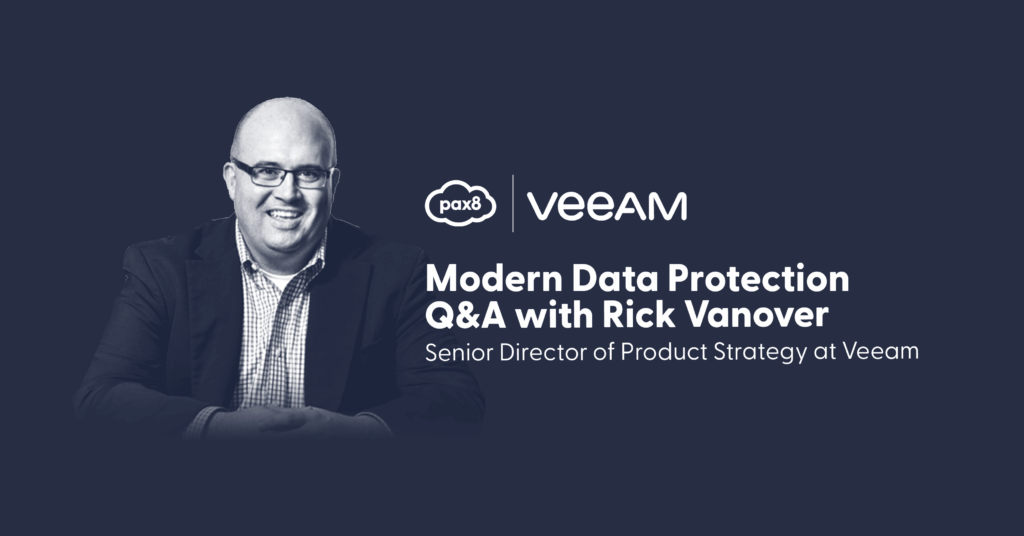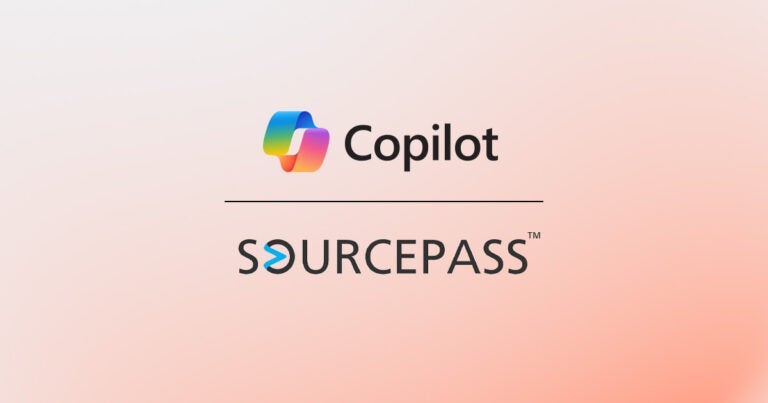Learn how to keep data safe.
Business data is at risk every day, from malicious cyberthreats like ransomware to accidental deletions by end users. These threats have only grown in the past year as businesses rushed to roll out remote work programs, which distributed the workforce and spread security vulnerabilities over a wider surface area. Legacy backup products simply weren’t built to handle these modern data protection concerns. So, what does it take to keep data safe in our current (and future) IT environments?
Pax8 spoke to Veeam’s Senior Director of Product Strategy Rick Vanover to learn from the global data management leader what modern data protection entails. Veeam also shared their recommendations for protecting data from today’s threats, no matter where employees work.
What current challenges do modern data protection solutions need to meet?
In today’s world of remote work, users are distributed but still need centralized access to the business applications and data required to perform their job. However, with increased network access comes increased vulnerability to unauthorized data access. Hacks and cyberattacks designed to steal data and block access to information are heightened in a globally connected network environment.
While the network has greater exposure in this dispersed IT environment, it also provides greater opportunities for connection and utilization of computing resources (e.g., private and public infrastructure) to enable the modern work force.
In many respects, the modern data center is a data center with virtual walls. Businesses today need a data protection strategy that meets the Service Level Agreement (SLA) requirements for a diverse, dispersed IT environment. Thankfully, MSPs now have more expanded options to architect a data protection implementation that meets their clients’ modern data protection needs.
How should data protection strategies and solutions adapt to remote workers?
Backups to protect data from compromise and provide resource availability to users are a fundamental building block of IT. At Veeam, we recommend the “3-2-1 backup strategy” — three copies of data, two stored on different online storage media, with one copy stored offsite in a cloud or vault. This strategy provides greater data protection coverage through multiple layers of copies and locations.
In a centralized environment, IT administrators can execute this backup discipline as part of their routine, professional practice. But with employees working remotely, backing up the information becomes more complicated. You must either train and rely on end users to maintain a backup discipline, or you can automate the process to better ensure data asset protection.
Clearly, automation is the stronger option to ensure that backups are consistently performed at regular intervals. To enable backup automation, organizations need the ability to support the diverse device types used by their end users (e.g., Windows, Linux, Mac).
How can businesses future-proof their data protection strategy to ensure they’ll be ready to meet the backup challenges of tomorrow?
While it’s impossible to predict in what ways the cybercrime world will evolve, one thing is certain – the volume and sophistication of cyberattacks will only continue to grow.
The first step to protect data now and in the future is to deploy the 3-2-1 backup strategy mentioned above – with automation for both centralized and remote data – to cover all the bases. This requires backup solutions that can meet client SLAs for data protection recovery.
To understand the extent to which downtime and data loss will affect your client’s business operations, work to establish their recovery time objective (RTO) and recovery point objective (RPO). RTO is how long their business operations can tolerate downtime and RPO is how many hours, minutes, or seconds of data they can tolerate losing.
The next step is to provide a comprehensive data management process that provides access control and administration for users. Then, you should test the recovery process from end to end, to ensure that everything is in place to function correctly in the face of disaster.
Finally, it’s important to note that a modern data protection strategy must be more holistic than just backing up data. You should also invest in network security solutions to help provide additional layers of defense against external threats.
In what ways can data protection solutions help MSPs and businesses combat the ever-growing threat of ransomware?
Ransomware continues to rise as one of the greatest threats to business data – in fact, researchers estimate that ransomware attacks increased by more than 150% in 2020 and ransom amounts nearly doubled. Much of this rapid growth can likely be attributed to the COVID-19 pandemic, which created cybersecurity vulnerabilities as companies rushed to enable remote work.
To protect against ransomware, the 3-2-1 backup strategy is an excellent way to lay a strong foundation for data protection. When selecting solutions to achieve this backup coverage, look for immutable backup capabilities that can ensure uncompromised restoration of data, even in the face of ransomware.
It’s also critical to invest in network security and perform an audit to identify, prioritize, and strengthen vulnerabilities before they can be exploited.
What should MSPs consider when building out a backup and continuity stack for SMB clients?
We keep saying it and we’ll say it again! Roll out a 3-2-1 backup strategy with your SMB clients – it’s an easy-to-remember method that provides layered, diversified backups to eliminate a single point of failure when it comes to data protection.
You should also prioritize data hierarchy with your SMB client to establish tiers of storage performance and scalability. This allows you to architect a solution that meets SLAs in a cost-effective manner and provides the flexibility to change as needed.
Lastly, consider vendors that provide purpose-built MSP tools that include remote monitoring and management capabilities.
Veeam: The Modern Data Protection Solution
Want to ensure your clients’ data is always available across all cloud types? Veeam offers comprehensive data protection solutions for on-premises, hybrid, and multi-cloud workloads to ensure fast, flexible, and reliable availability and recovery of data and applications.
Want some resources to help you sell leading continuity and backup solutions such as Veeam? Click below for access to the Guide to Selling Backup Solutions, a cost of downtime calculator, white-labeled sales deck, and more.





